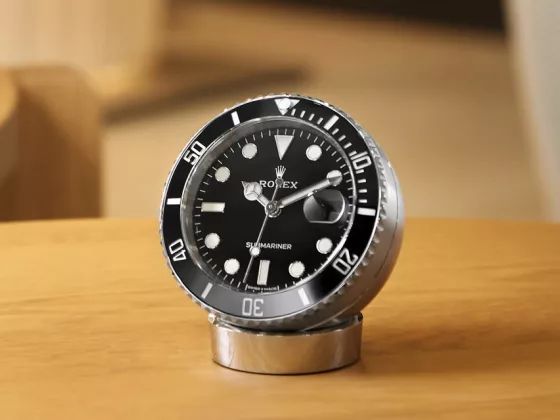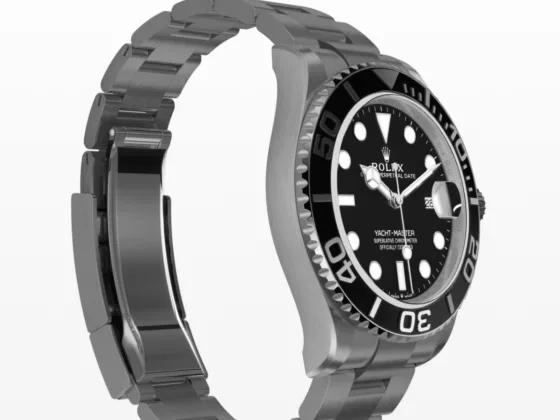The History of Rolex Yacht-Master: Nautical Excellence on the Wrist
The history of Rolex Yacht-Master represents one of the most fascinating chapters in luxury sports watchmaking. Though relatively younger than some of Rolex's iconic collections, the Yacht-Master has quickly established itself as the definitive nautical timepiece, combining seafaring functionality with elegant aesthetics.
Created specifically for navigators and sailing enthusiasts, this collection embodies Rolex's deep connection to the maritime world.
The history of Rolex Yacht-Master, from its surprising origins to its evolution into various sizes and materials, reveals how Rolex's commitment to both style and substance created a modern classic designed for life on the open water.
A. Rolex's Maritime Foundations

The Maritime Connection
Before delving deeper into the history of Rolex Yacht-Master, it's important to understand Rolex's established connections with the maritime world. From the 1926 waterproof Oyster case to successful partnerships with pioneering sailors and navigators, the brand's reputation for reliable timepieces at sea was well-established. Throughout the mid-20th century, Rolex watches had become favored tools for yachtsmen who appreciated their durability and precision in challenging marine environments.
The Submariner Precursor
The history of Rolex Yacht-Master actually has interesting ties to the Submariner. In the early 1960s, Rolex developed a prototype of what was then called a "Yacht-Master" version of the Submariner. However, this model never went into production, remaining one of the great "what-ifs" in Rolex's design archives for nearly three decades.
B. Birth of the Yacht-Master Collection

1992: The Official Launch
The history of Rolex Yacht-Master officially began in 1992 with the introduction of the first production model—the reference 16628. What made this debut particularly notable was that Rolex chose to launch their new nautical collection in 18-karat yellow gold rather than stainless steel, immediately positioning the Yacht-Master as a luxury sports watch rather than a purely tool-oriented timepiece.
Distinctive Design Features
The original Yacht-Master featured several characteristics that would define the collection:
- A bidirectional rotatable bezel with raised polished numerals against a sandblasted background
- A 40mm case size that balanced presence with wearability
- The reliable Caliber 3135 movement with date function
- A special "Yacht-Master" inscription in red on the dial
- The Oyster bracelet with Fliplock clasp
The watch was waterproof to 100 meters (330 feet)—less than the Submariner's depth rating but more than adequate for recreational sailing and yachting.
C. Expansion and Evolution: Mid-1990s to 2000s

1994: The Two-Tone and Ladies' Models
Just two years after its debut, the history of Rolex Yacht-Master expanded with the introduction of:
- The reference 68628: A 35mm mid-size version
- The reference 69628: A 29mm ladies' model
- The reference 16623: A two-tone (Rolesor) version combining stainless steel and yellow gold
These additions made the Yacht-Master collection accessible to a wider audience and established it as a versatile line within Rolex's offerings.
1999: Rolesium Makes Its Debut
In 1999, Rolex introduced a unique materials combination exclusive to the Yacht-Master: Rolesium. This pairing featured a stainless steel case and bracelet with a platinum bezel and dial (reference 16622). The subtle luxury of the platinum components against the durability of steel created a distinctive aesthetic that further differentiated the Yacht-Master from other Rolex sports watches.
2005: Enhanced Bracelets and Clasps
The history of Rolex Yacht-Master saw subtle but important upgrades in the mid-2000s with the integration of improved Oyster bracelet technology, including:
- The Easylink comfort extension link, allowing the wearer to adjust the bracelet length by approximately 5mm
- Enhanced Oysterlock clasps for greater security
- Improved finishing and solidity in the bracelet links
D. Modern Evolution: 2010s-Present
2012: The Yacht-Master II Complication
An important milestone in the history of Rolex Yacht-Master came with the introduction of the Yacht-Master II. Though technically a separate model, it represents a significant chapter in the collection's development. Introduced in 2012, this specialized regatta chronograph featured:
- A programmable countdown with mechanical memory
- The innovative Ring Command bezel for setting the countdown
- A substantial 44mm case size
- The most complex movement Rolex had produced to date
This purpose-built regatta timer demonstrated Rolex's commitment to creating functional tools for competitive sailing—returning to the collection's sporting roots while showcasing cutting-edge watchmaking technology.
2015: The Everose Yacht-Master and Oysterflex
A significant aesthetic update in the history of Rolex Yacht-Master came in 2015 with the introduction of the reference 116655: the Everose gold Yacht-Master on the innovative Oysterflex bracelet. This represented several firsts for the collection:
- The first application of Rolex's proprietary rose gold alloy in this collection
- The debut of the black Cerachrom bezel insert in the Yacht-Master line
- The introduction of the innovative Oysterflex bracelet, featuring a flexible metal core surrounded by black elastomer
- A matte black dial that created striking contrast with the warm rose gold case
This combination modernized the collection while maintaining its distinctive character.
2016: The Yacht-Master 40 Expands Material Options
In 2016, the history of Rolex Yacht-Master continued with the reference 116622, featuring:
- A refreshed dial design with larger hour markers
- A blue seconds hand adding a subtle color accent
- Improved Chromalight luminescence for better visibility in low-light conditions
- The new-generation caliber 3235 movement with approximately 70 hours of power reserve
2019: The Yacht-Master 42 Debuts
Responding to market trends toward larger watches, Rolex introduced the Yacht-Master 42 (reference 226659) in 2019:
- A white gold case with a diameter of 42mm
- The black Cerachrom bezel and Oysterflex bracelet combination
- The caliber 3235 movement with enhanced power reserve and precision
- A slightly redesigned dial with optimized proportions for the larger case size
This addition gave the collection a more contemporary presence while maintaining the sophisticated aesthetics that distinguished it from more tool-oriented Rolex sports watches.
2020-2022: Refinement and New Color Combinations
The most recent chapters in the history of Rolex Yacht-Master have focused on subtle refinements and material variations:
- The introduction of the Yacht-Master 37 in Everose Rolesor (combining Oystersteel and Everose gold)
- New dial colors including a rhodium dial with bright blue accents
- Technical improvements to the movement and bracelet systems
- Enhanced finishing techniques for both case and dial components
Rolex has continued to position the Yacht-Master as the perfect blend of nautical functionality and elegant design—suitable for both active sailing and sophisticated social occasions.
Technical Aspects of the Yacht-Master
Bezel Innovation
Throughout the history of Rolex Yacht-Master, the collection's distinctive bezel has remained its most recognizable feature. Unlike the unidirectional safety bezels of diving watches, the Yacht-Master's bidirectional rotatable bezel serves as a timing device for sailors, allowing them to calculate elapsed time or distance traveled. The raised numerals provide excellent grip even with wet hands—a practical feature for the nautical environment.
Marine-Grade Materials
Rolex has consistently selected materials that perform well in marine environments for the Yacht-Master collection:
- 904L stainless steel (now called "Oystersteel") offers superior corrosion resistance against saltwater
- Platinum and gold alloys receive special treatments to maintain their luster despite exposure to the elements
- The Cerachrom ceramic bezel inserts resist scratching and fading from UV exposure—important considerations for watches frequently worn outdoors
Nautical Functionality
Despite its luxury positioning, the Yacht-Master incorporates several practical features for sailors:
- The reliable water resistance (100m/330ft) provides security during sailing activities
- High legibility dials with Chromalight luminescent material ensure readability in changing light conditions on the water
- Secure clasps with extension systems accommodate wearing the watch over sailing gear when needed
Takeaway
The history of Rolex Yacht-Master reveals a collection that has successfully balanced luxury aesthetics with nautical utility. From its somewhat delayed birth in 1992 to its current status as one of Rolex's most versatile sports watches, the Yacht-Master represents the brand's enduring connection to maritime adventure.
When examining the complete history of Rolex Yacht-Master, we see how it differs from purely tool-oriented watches in the Rolex lineup. The Yacht-Master embraced a more refined approach from the start, making it equally at home on a sailboat or at a yacht club dinner.
As Rolex continues to evolve this relatively young collection, the Yacht-Master serves as a perfect expression of the brand's ability to create timepieces that are both functional instruments and symbols of achievement. For sailing enthusiasts and watch collectors alike, the history of Rolex Yacht-Master demonstrates how thoughtful design, premium materials, and technical excellence can combine to create a modern classic that celebrates the timeless allure of life on the open water.
Goes along
You might also like

Bell & Ross BR 03-92 Diver Tara

Blancpain Fifty Fathoms Bathyscaphe Red Gold Watches

MING 37.11 Odyssey: Triple Time Zone Mechanical Travel Watch

The Rolex Submariner Date Desk Clock: Iconic Timekeeping for Your Office

Top 10 Dive Watches of 2024



